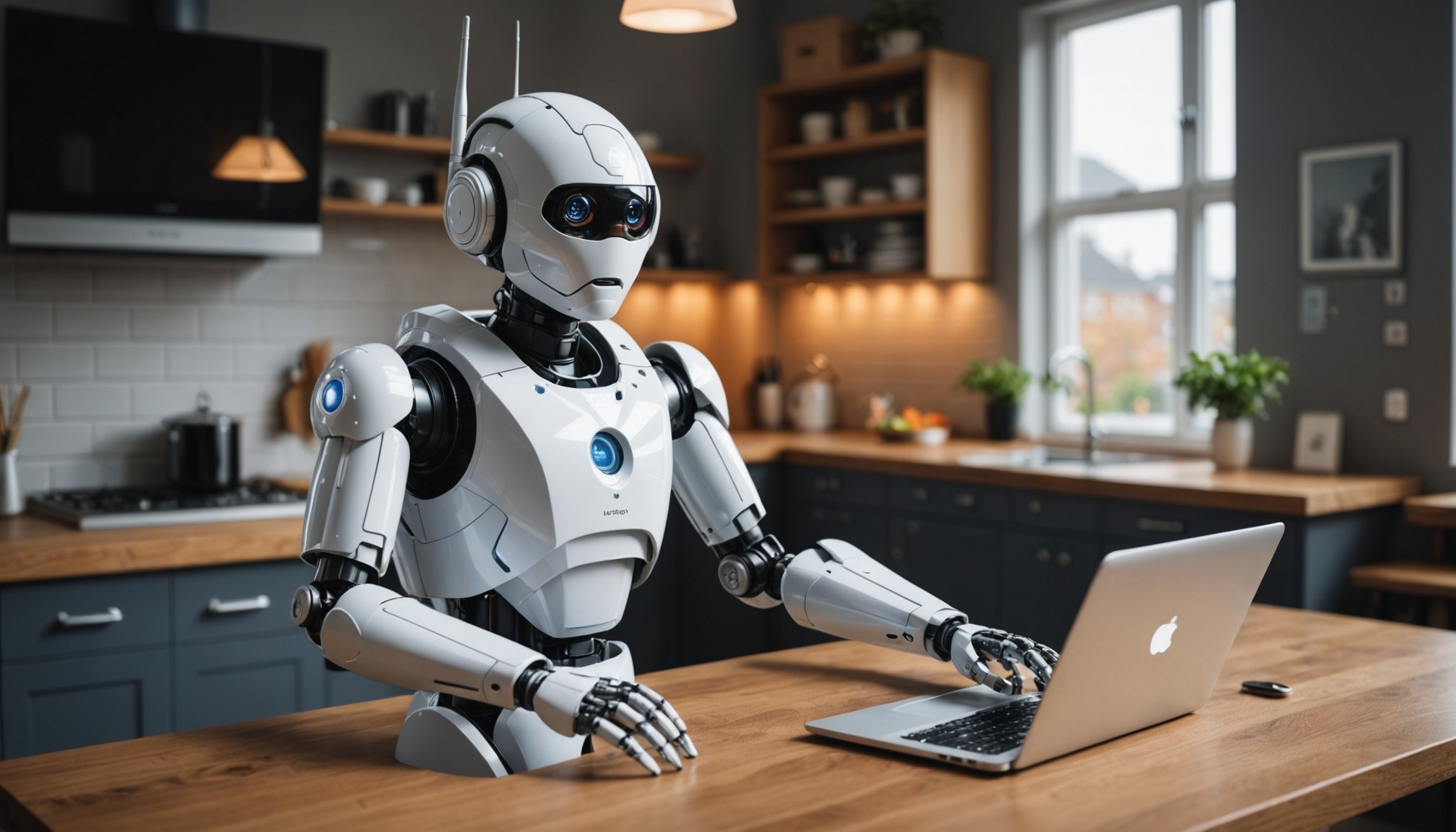Understanding the Security Risks Posed by AI-Powered IoT Devices in UK Households
In the era of smart homes and interconnected devices, the integration of Artificial Intelligence (AI) and the Internet of Things (IoT) has transformed the way we live, making our lives more convenient and efficient. However, this technological advancement comes with a significant set of security risks that every household in the UK needs to be aware of.
The Rise of AI-Powered IoT Devices
AI-powered IoT devices are becoming increasingly common in UK households. From smart thermostats and security cameras to voice assistants like Amazon Alexa and Google Home, these devices use machine learning and deep learning techniques to learn and adapt to our habits and preferences.
In parallel : Revolutionizing UK Public Transport: How AI Boosts Efficiency and Service Quality
Examples of AI-Powered IoT Devices
- Smart Home Assistants: Devices like Amazon Alexa and Google Home use AI to understand voice commands, control other smart devices, and even predict user needs.
- Smart Security Cameras: Cameras equipped with AI can detect and alert users to unusual activity, such as intruders or suspicious behavior.
- Smart Thermostats: Devices like Nest Learning Thermostat use AI to learn and adjust the temperature based on the user’s schedule and preferences.
Security Risks Associated with AI-Powered IoT Devices
While AI-powered IoT devices offer numerous benefits, they also introduce several security risks that can compromise the safety and privacy of households.
Data Privacy Concerns
One of the most significant risks is the collection and misuse of personal data. These devices often gather vast amounts of data, including voice recordings, location information, and usage patterns. If this data falls into the wrong hands, it can lead to serious privacy breaches.
In the same genre : Essential Factors to Weigh for Successful AI Integration in UK”s Healthcare Landscape
- **Unsecured Data Transmission**: Many IoT devices transmit data without proper encryption, making it vulnerable to interception.
- **Data Storage**: Centralized data storage can be a single point of failure, where a breach can expose a large amount of sensitive information.
- **Third-Party Access**: Some devices grant access to third-party services, which can further increase the risk of data misuse.
Cyber Security Threats
AI-powered IoT devices are also susceptible to various cyber security threats, including:
- **Ransomware Attacks**: Hackers can use AI to launch sophisticated ransomware attacks, encrypting data and demanding ransom in exchange for the decryption key.
- **DDoS Attacks**: Distributed Denial of Service (DDoS) attacks can overwhelm the network, making the device or the entire network unavailable.
- **Malware Infections**: Malware can be injected into IoT devices, allowing hackers to control the device remotely or steal sensitive information.
Real-World Examples and Incidents
Several incidents have highlighted the security risks associated with AI-powered IoT devices.
Example: Mirai Botnet Attack
In 2016, the Mirai botnet attack demonstrated the vulnerability of IoT devices. Hackers exploited weak passwords and vulnerabilities in IoT devices to create a massive botnet that launched a DDoS attack on major websites, including Twitter and Netflix.
Example: Amazon Alexa Privacy Breach
In 2018, it was reported that Amazon Alexa had recorded and sent a private conversation to a random contact without the user’s consent. This incident raised concerns about the privacy and security of voice assistants.
Mitigating Security Risks
To protect against these security risks, households can take several proactive steps:
Secure Device Configuration
- Change Default Passwords: Immediately change the default passwords of IoT devices to prevent unauthorized access.
- Enable Encryption: Ensure that data transmission is encrypted to protect against interception.
- Regular Updates: Keep the device software and firmware up to date to patch known vulnerabilities.
Network Security
- Use a Secure Network: Connect IoT devices to a separate network from your main home network to isolate potential breaches.
- Firewall and Antivirus: Use a firewall and antivirus software to protect against malware and other cyber threats.
Data Protection
- Limit Data Sharing: Be cautious about the amount of data shared with third-party services and ensure that only necessary data is collected.
- Use Secure Storage: Use secure cloud storage services that offer robust encryption and access controls.
Expert Insights and Recommendations
Experts in the field of cyber security and AI emphasize the importance of proactive measures to secure IoT devices.
Quote from Cyber Security Expert
“Cyber security is not just about protecting against known threats; it’s about anticipating and preparing for new and emerging risks. With AI-powered IoT devices, the stakes are higher because the potential impact of a breach can be much greater,” says Cyndie Feltz, Co-founder of Yack Sécurité inc.[4]
Table: Comparative Analysis of Security Features in Popular AI-Powered IoT Devices
| Device | Default Password Change | Encryption | Regular Updates | Secure Storage |
|---|---|---|---|---|
| Amazon Alexa | Yes | Yes | Yes | Yes |
| Google Home | Yes | Yes | Yes | Yes |
| Nest Learning Thermostat | Yes | Yes | Yes | Yes |
| Ring Security Camera | Yes | Yes | Yes | Yes |
| August Smart Lock | Yes | Yes | Yes | Yes |
AI-powered IoT devices are revolutionizing the way we live, but they also introduce significant security risks. By understanding these risks and taking proactive measures to secure these devices, households in the UK can enjoy the benefits of smart home technology while protecting their privacy and security.
Practical Advice
- Stay Informed: Keep up to date with the latest security advisories and updates from device manufacturers.
- Use Learning Resources: Utilize resources like the ACM Proceedings and IEEE DOI to stay informed about the latest research and best practices in IoT security.
- Engage in Community Discussions: Participate in conferences and online forums to share knowledge and learn from others about securing AI-powered IoT devices.
In the end, securing AI-powered IoT devices is a shared responsibility between manufacturers, service providers, and users. By working together, we can create a safer and more secure smart home environment.











